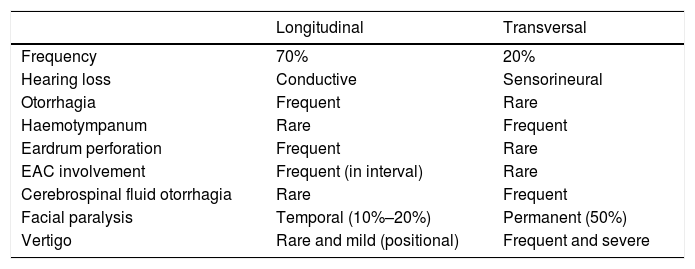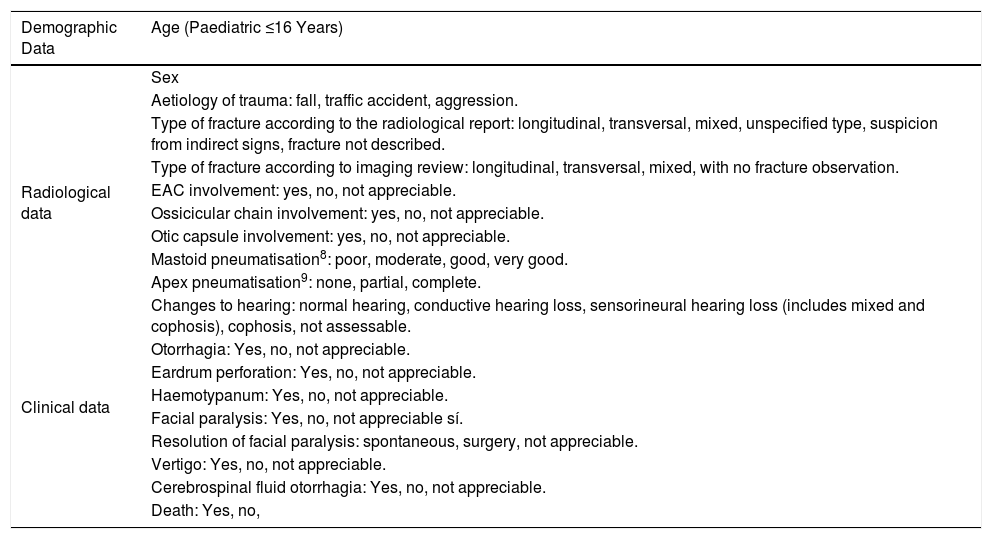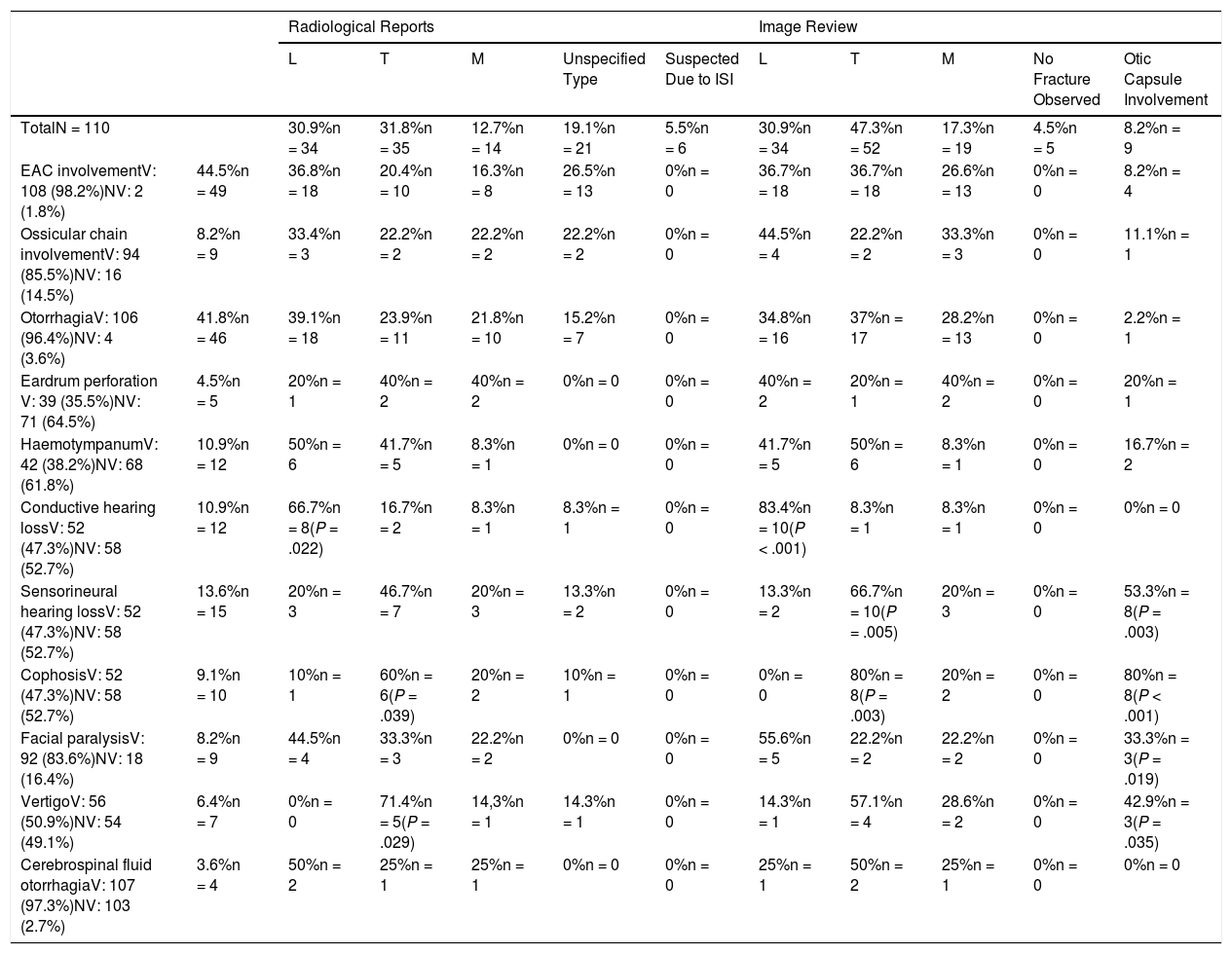The diagnosis of temporal bone fractures (TBF) is based on radiological imaging. The most widely used classification divides fractures into longitudinal, transverse, and mixed. In recent years, other classifications have emerged to better predict clinical manifestations.
ObjectivesTo review computed tomography (CT) images of TBF, define their radiological pattern, and study the concordance of the observed findings with those described in the radiological report. To analyse the association between fracture types and clinical findings. To study the impact of mastoid pneumatization on fracture characteristics.
MethodsRetrospective study of 110 TBF diagnosed with CT between January 2016 and May 2019.
ResultsFifty-two transverse (47%), 34 longitudinal (30%), and 19 mixed fractures (17%) were identified with good interobserver agreement (k = .637). Longitudinal fractures were associated with conductive hearing loss (P < .001) and transverse fractures with sensorineural hearing loss (P = .005). Of the fractures, 8.2% showed involvement of the otic capsule, and were associated with sensorineural hearing loss (P < .001), facial paralysis (P = .019) and vertigo (P= .035). Fractures were more frequent in cases of greater pneumatization, and the involvement of the otic capsule in cases of very good pneumatization (P = .024).
ConclusionsThe traditional classification of TBF is reproducible. Its association with clinical findings improves when the involvement of the otic capsule is also analysed. Mastoid pneumatization is not a protective factor for TBF or for involvement of the otic capsule.
El diagnóstico de las fracturas del hueso temporal (FHT) se basa en la imagen radiológica. La clasificación más utilizada divide las fracturas en longitudinales, transversales y mixtas. En los últimos años han surgido otras clasificaciones con el objeto de predecir mejor las manifestaciones clínicas.
ObjetivosRevisar las imágenes de tomografía computarizada (TC) del hueso temporal, definir su patrón radiológico según la clasificación tradicional y estudiar la concordancia interobservador de los hallazgos observados con los descritos en el informe radiológico. Analizar la asociación entre los tipos de fractura y los hallazgos clínicos. Estudiar el impacto de la neumatización mastoidea en las características de la fractura.
Materiales y métodosEstudio retrospectivo de 110 FHT diagnosticadas mediante TC entre enero de 2016 y mayo 2019.
ResultadosSe identificaron 52 fracturas transversales (47%), 34 longitudinales (30%) y 19 mixtas (17%) con buena concordancia interobservador (k = 0,637). Las fracturas longitudinales se asociaron con hipoacusia de transmisión (P <0,001) y las transversales con hipoacusia neurosensorial (P =0,005). El 8,2% de las fracturas presentaron afectación de cápsula ótica y se asociaron con hipoacusia neurosensorial (P <0,001), parálisis facial (P =,019) y vértigo (P =,035). Las fracturas fueron más frecuentes en los casos de mayor neumatización, y la afectación de cápsula ótica en casos de muy buena neumatización (P =,024).
ConclusionesLa clasificación tradicional de las FHT es reproducible. Su asociación con los hallazgos clínicos mejora cuando se analiza además la afectación de la cápsula ótica. La neumatización mastoidea no es un factor protector para las FHT ni para la afectación de la cápsula ótica.













